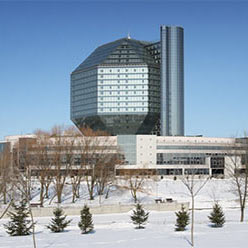The book exhibition “Mediation: intermediacy and reconciliation”, dedicated to the International Day of Conflict Resolutions, has been opened in the Legal Information Reading Room (207b) from August 29 till October 30.
The art of mediation has existed for a long time, just like conflicts. Mediators were asked for help in conflict resolutions in Ancient Babylon and Ancient Greece. Historians know well, that mediation is employed in the resolution of international, interethnic and just multilateral conflicts. It had different names: intermediacy, intercession, good offices offer. Such methods of conflict resolution were widely used when negotiations reached a dead end and it was necessary in order to achieve success to make opposite parties understand and accept each other’s points of view. Many years ago people understood that negotiations help resolve serious discords and reach a sensible decision more than norms or a hierarchical order.
The mediation as a modern term began to develop in the second half of the 20th century in the countries of the common law in the USA, Australia, Great Britain, then it spread across Europe.
The institute of mediation, having earned a good reputation in European countries, has developed in Russia and Belarus nowadays. The law “On mediation”, adopted in 2013, means that the mediation is a lawful way of legal issues regulation, the state recognizes it and results of this procedure – the conclusion of a meditative agreement.
Mediation is a universal procedure. It’s employed almost in all conflicts in the sphere of private law relations. The law became an important impetus of its development in the country as a complex phenomenon, allowed to increase opportunities of citizens and business entities in the choice of conflict regulation methods. Conditions for mediation integration in the national legal culture were created with the adoption of the law.
Besides, it’s necessary to understand: to solve a problem of active establishment of this institute, the change of citizens’ conscience, interest and active life position of the involved people and, of course, the state support are vital.
The exposition includes nearly 80 documents: books, brochures, periodicals, synopsis of theses. It’ll be interesting to judges, practicing mediators, lawyers, litigation lawyers, notaries, alternative conflict resolution experts, and professors, students, postgraduates of law schools.
The exhibition includes the following sections:
- History, theory, prospects of justice and alternative legal procedures development.
- Establishment and state of mediation institute development in the national law.
- Mediation development in Russia: theory, practice, education.
- Settlement arrangements in the foreign law.
- Mediation in the notary and lawyer’s activities.
- Mediation in the criminal law in Belarus and abroad.
- Mediation as an alternative way of conflict resolution in different spheres of legal activities.
Useful links:
 |
 |
 |










